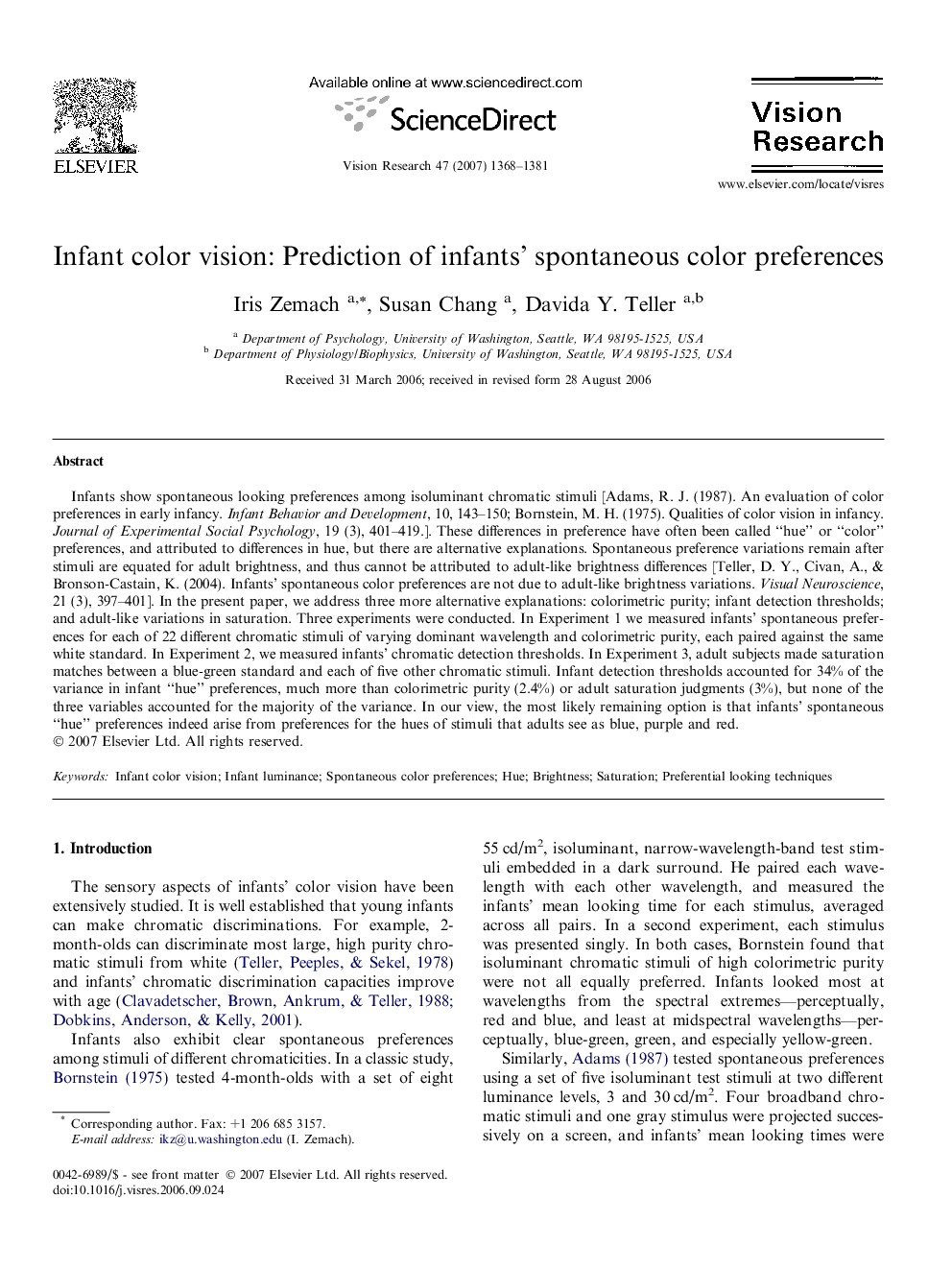| Article ID | Journal | Published Year | Pages | File Type |
|---|---|---|---|---|
| 4036327 | Vision Research | 2007 | 14 Pages |
Infants show spontaneous looking preferences among isoluminant chromatic stimuli [Adams, R. J. (1987). An evaluation of color preferences in early infancy. Infant Behavior and Development, 10, 143–150; Bornstein, M. H. (1975). Qualities of color vision in infancy. Journal of Experimental Social Psychology, 19 (3), 401–419.]. These differences in preference have often been called “hue” or “color” preferences, and attributed to differences in hue, but there are alternative explanations. Spontaneous preference variations remain after stimuli are equated for adult brightness, and thus cannot be attributed to adult-like brightness differences [Teller, D. Y., Civan, A., & Bronson-Castain, K. (2004). Infants’ spontaneous color preferences are not due to adult-like brightness variations. Visual Neuroscience, 21 (3), 397–401]. In the present paper, we address three more alternative explanations: colorimetric purity; infant detection thresholds; and adult-like variations in saturation. Three experiments were conducted. In Experiment 1 we measured infants’ spontaneous preferences for each of 22 different chromatic stimuli of varying dominant wavelength and colorimetric purity, each paired against the same white standard. In Experiment 2, we measured infants’ chromatic detection thresholds. In Experiment 3, adult subjects made saturation matches between a blue-green standard and each of five other chromatic stimuli. Infant detection thresholds accounted for 34% of the variance in infant “hue” preferences, much more than colorimetric purity (2.4%) or adult saturation judgments (3%), but none of the three variables accounted for the majority of the variance. In our view, the most likely remaining option is that infants’ spontaneous “hue” preferences indeed arise from preferences for the hues of stimuli that adults see as blue, purple and red.
